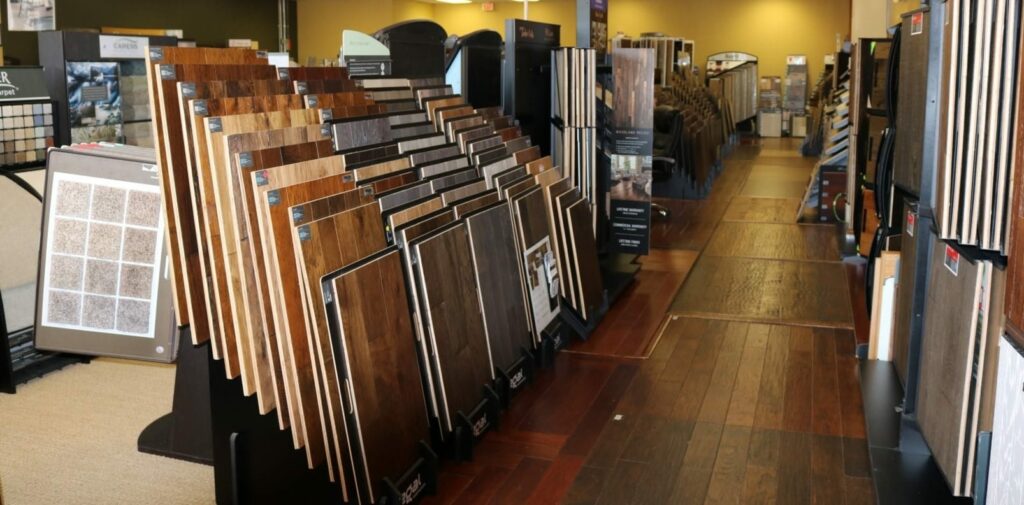Natural VS Synthetic Flooring Materials

Natural flooring options are always the most preferred flooring materials over the decades. This is one of the strategies of maintaining a healthy environment for successive generations to come. However, natural materials are prone to several limitations. These trigger the need for the development of synthetic materials to bridge the gap. Therefore, the winner in natural vs synthetic flooring materials is not obvious because each has its pros and cons.
Natural Flooring
Natural flooring is the use of renewable flooring materials. The various natural flooring options include Cork, bamboo, linoleum, wood, resins, leather, stone, porcelain, rubber, glass, concrete, carpet (woolen and sisal).
Benefits of Using Natural Flooring Materials
Sustainability- The most significant advantage of using natural materials is sustainability. It, therefore, means that these materials can be extracted from nature continuously without getting exhausted. The durability is not only about articles from which the rich, but also they are readily biodegradable, thereby posing no risk of pollution.
Durability- If well maintained, natural flooring can last for years if not decades. They form a proportion of the few flooring materials that can last for a lifetime.
Natural beauty- The authentic beauty of nature presented by the natural flooring material is incomparable to the original images or appearance digitally printed on the synthetic flooring material.
Natural resilience- Natural flooring materials have their adaptive features such as antistatic and insect repellant.
Emission of low amount of toxins- The materials release little or no harmful substances, which is a significant issue in synthetic flooring materials. They are environmental-friendly.
Natural colors- Natural flooring materials come in a variety of beautiful colors, shades, and tones which easily blends with the floor and décor styles.
Less chemical treatment- The materials are from sustainable materials with important antimicrobial ability.
Low flammability-Natural flooring has meager flammability chances that makes them suitable for flooring materials
Healthy flooring- The options provide a healthy family environment. Absence of harmful substance emission makes them ideal for family use as they have a low probability of triggering allergic reactions.
Shortcomings of Natural Flooring
Lack of homogeneity- Natural flooring materials are as unique as their existence in nature. Uniformity of natural products has been one of the primary concern in the real industry. The expertise put on improving product homogeneity increases consumer cost thus making it more costly to acquire compared to synthetic flooring product. Moreover, natural flooring materials exist in a limited color range, thereby leaving very few options to be selected.
Lack of flexibility in use- Most of the natural flooring materials such as stones, cork, and native plant fiber lack versatility thus restricting the specific type of environment
Natural vulnerability- Some natural flooring, such as leather and rubber are susceptible to wear and tear due to their natural properties.
Wear and tear of the surface- Natural flooring needs to be treated with protective varnishes to improve its susceptibility to surface wear or tear. Even if the best flooring contractor worked on it, no significant change in its nature.
Synthetic Flooring Materials
Synthetic flooring is the use of flooring materials that are industrially made to suit various consumer tastes and preferences; for example, luxury vinyl planks ( LVF) and laminate. They are non-renewable and pose an inevitable impact on the environment due to their non-degradability. Currently, many people prefer synthetics as the best floor and décor TX. However, synthetic flooring also has several advantages, as summarized below:
Durability- Most synthetic flooring materials have high strength that maybe even more than the natural options due to the top technologies used to design them.
Price flexibility- Synthetic flooring options are readily available in commercial flooring TX for a variety. The floorings are available in different categories ranging from small scale to wholesale.
Easy maintenance- Surfaces of synthetic flooring materials are smooth and waterproof, thus making it easy to clean and remove stains.
Significant Resistance to staining and wear- Synthetic flooring materials are made stain-proof due to their smooth surface.
Replacement- Synthetic floorings are highly durable and always allows for sport repair without having to renovate the whole room.
Diversity of choice- Manufacturers provide a wide range of brands for consumers to choose from in the market.
Highly versatile- The materials provide more choices for customers to select their taste satisfactorily. Moreover, most synthetic flooring can be used anywhere in the house.
Limitations of Synthetic flooring
The main limitations of using synthetic flooring material are based on human and environmental health as well as sustainability. Synthetic flooring emit harmful toxins in our rooms, thereby posing a risk of allergic reaction and other conditions. When disposed of, synthetic materials deteriorates the quality of the environment.
In conclusion, the choice on synthetic vs natural flooring material is based on condition of the room, cost, environmental sensitivity, and traffic.


